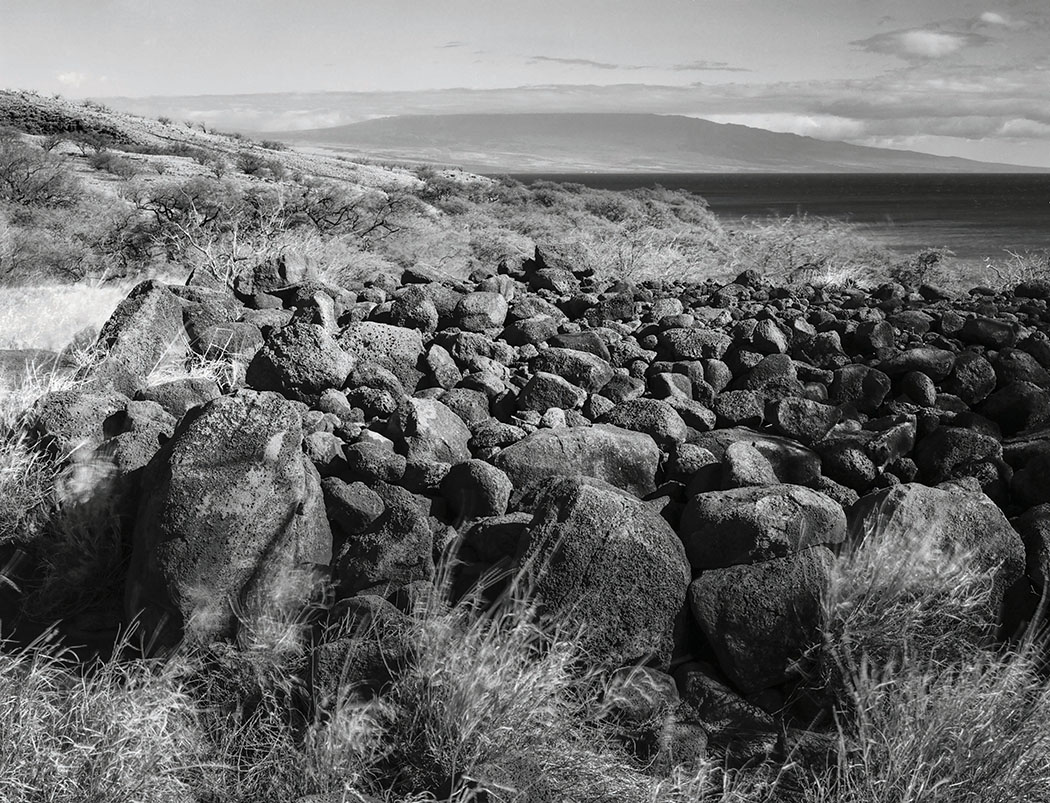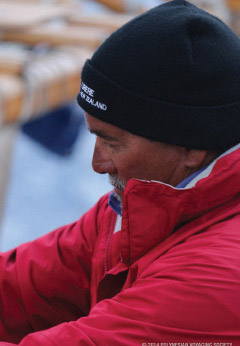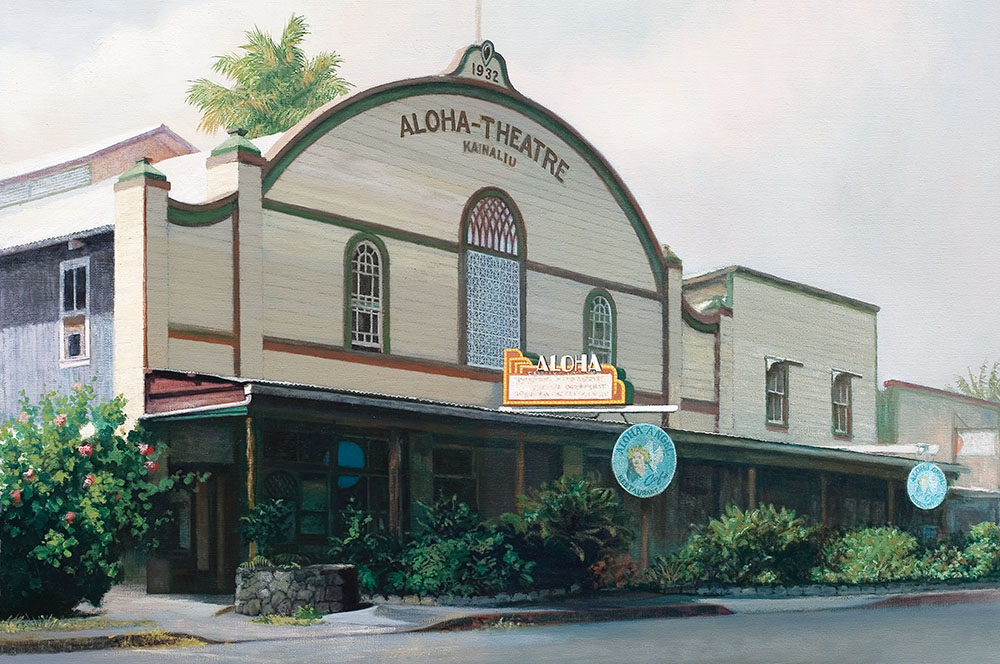
Lake Waiau

By Karen Valentine
Like a deep and mysterious woman, she lies nestled in her bed of ancient lava within the majestic pinnacle of the sacred mountain Maunakea. One of the few tropical alpine lakes in the world, Lake Waiau has many subtle moods, changing slightly with the season and precipitation levels, yet steadfast through the centuries. Remote from the interference of humanity in the frosty tundra, the surface of Lake Waiau is at 13,025 feet above sea level (just 771 feet below the summit of Maunakea at 13,796). Her ecosystem remains mostly as it was 3,000 years ago, an era which core samples taken by scientists have identified.
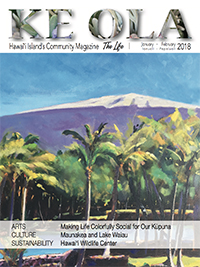
Native Hawaiian legends and practices identify Lake Waiau as a sacred site that should be treated with reverence. It is roughly heart shaped and it slopes to its deepest point a little off center. This shape has led it to be considered a piko or navel. “Deep” in physical terms is less than 10 feet, depending on lake level, however we are using the term defined more as mysterious. In fact, before measurements were taken, the lake was once thought to be bottomless.
The magical, mirror-like surface of the lake is perhaps reflecting the snow goddesses who once bathed here. One of these is Waiau, one of four snow goddesses related to Pele, which also include Poliahu of Maunakea. In the Sacred Texts chapter, “Pele and the Snow Goddess,” there were four maidens with white mantles—Poliahu and Waiau of Maunakea, Lilinoe of Haleakalā, Kahoupokane of Hualālai (sacred-texts.com).
They were all queens of beauty, full of wit and wisdom, lovers of adventure, and enemies of Pele. They were the goddesses of the snow-covered mountains. They embodied the mythical ideas of spirits carrying on eternal warfare between heat and cold, fire and frost, burning lava and stony ice. They ruled the mountains north of Kilauea and dwelt in the cloud-capped summits. They clothed themselves against the bitter cold with snow-mantles. They all had the power of laying aside the white garment and taking in its place clothes made from the golden sunshine….
Waiau was another snow-maiden of Mauna Kea, whose record in the legends has been almost entirely forgotten. There is a beautiful lake glistening in one of the crater-cones on the summit of the mountain. This was sometimes called “The Bottomless Lake,” and was supposed to go down deep into the heart of the mountain. It is really 40 feet in its greatest depth-deep enough for the bath of the goddess. The name Wai-au means water of sufficient depth to bathe.
Somewhere, buried in the memory of some old Hawaiian, is a legend worth exhuming, probably connecting Waiau, the maiden, with Waiau, the lake.
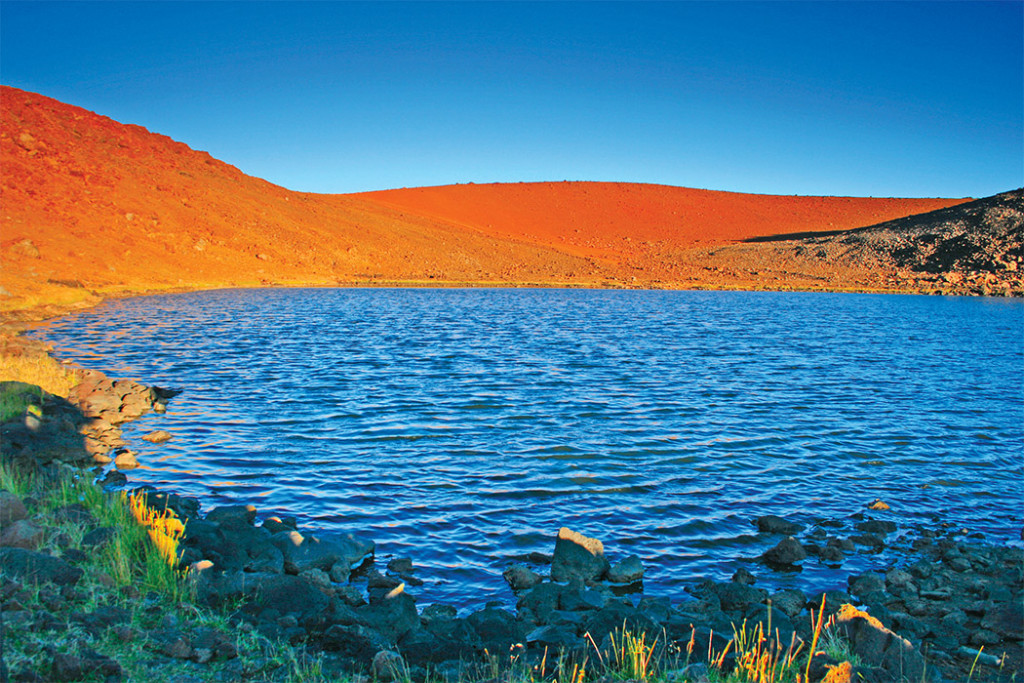
How Does the Water Stay in the Lake?
People wonder why the water in Lake Waiau, collected by snow melt, doesn’t just drain through the porous lava. In 2010, a year of low precipitation on the island, it appeared to be disappearing. However, the lake level has revived.
Scientists study this matter. Herbert Gregory and Chester Wentworth wrote in a 1937 bulletin of the Geological Society of America, “Waiau—a perennial body of water in the bowl of the comparatively old Waiau ash cone—has the appearance of an ordinary crater lake, but striae directed toward the basin from the northeast, morainal deposits high up on its southern slope, and scour marks on its outlet bar, show that it was occupied by glacial ice. The possibility is suggested that downward seepage of lake water is impeded not only by fine-grained ash and organic material but also by ground ice that probably forms each year.”
Underneath Lake Waiau exists hidden streams and reservoirs that contribute to the water supply of the island. The lowest point of the lake’s rim is on the western side, where the lake water occasionally overflows into the headwaters of Pohakuloa Gulch, which extends all the way to Kawaihae.
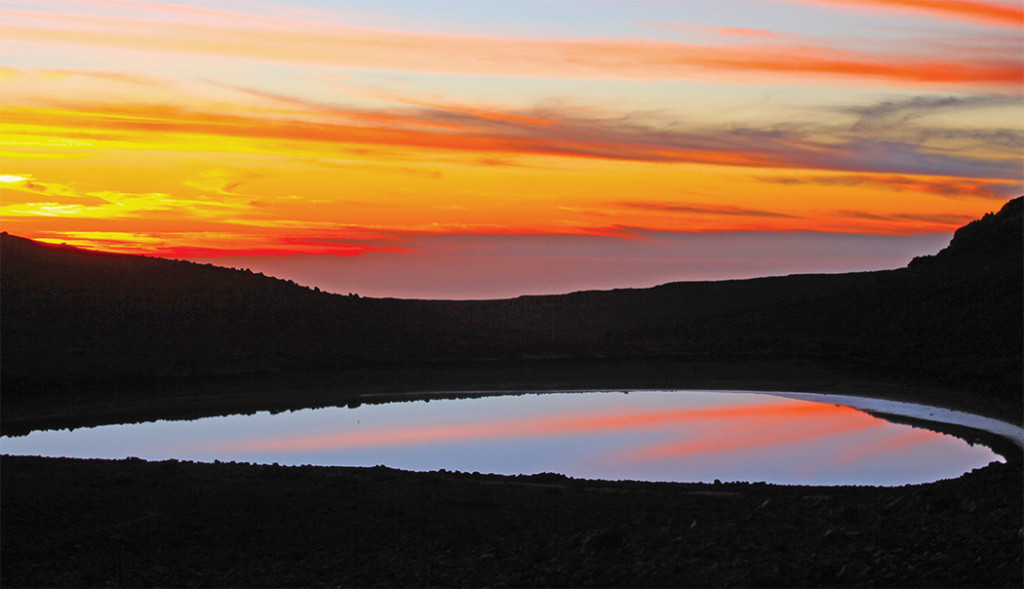
What is in the Lake?
As a student at University of Hawai‘i at Hilo in the 1970s, Dr. Jane Massey Licata chose to do her PhD dissertation on Lake Waiau and spent nearly three years trekking to the frigid shores of the lake to take measurements. Today she is a lawyer and adjunct professor at Rutgers School of Law. Jane returned to the lake in May, 2017, to visit and give a lecture on her past findings. Her specialty at that time was a unicellular phytoplankton called a diatom. During her time there, she discovered a new species of diatom, Stauroneis maunakeaensis.

“I spent my 21st birthday there,” Jane says. “It was hard to work up there to take the measurements and do all the experiments. For me it was a very significant time in my life. Lake Waiau is a very special place for me. She captured my heart, soul and mind when I was very young, and returning to share some time with her again over 40 years later was a gift. It was quite remarkable to stand on her shore with my youngest son, who is the same age as when I did the research at Waiau, and see that he too could understand the wonder and beauty and spirit of the place. It was also reassuring that nothing had really changed at the lake except the hike in.”
In her studies, Jane found that the lake’s ecosystem is very simple, noting that the lake sometimes appeared beautifully blue and other times had a green cast to it. What was happening was related to the variation in the tiny algae and spider plankton that would live and die in the lake throughout the seasons. Like a swimming pool whose bottom is painted either blue or green, the water takes on that color. The algae aren’t floating in the lake. They are at the bottom, and as they die they become part of the sediment, she says. The intense light at that elevation enhances the color and mirror-like quality of the lake’s surface.
The lake was even more isolated during her research than it is today, with few visitors.
Jane’s comparison of species with those in core samples taken measuring a period of over 3,000 years led her to conclude that the lake at the time of her studies was approximately the same.
“Returning this year, it was looking very much the same as in 1978. It was very comforting.”
Human Intervention
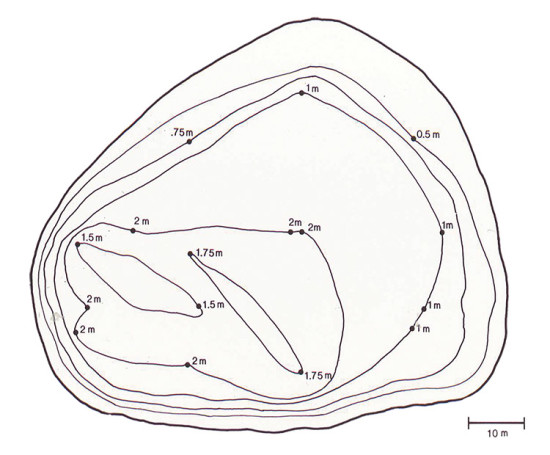
At different times, Lake Waiau was used—or was attempted to be used—for the purposes of humans. It was once investigated as a source of water for the Hilo Kohala Railroad, once stocked with trout that didn’t survive, and once touted in magazines as a “tropical ice skating rink.”
Jane’s research of the core samples showed that about 1,000 years ago, there were other species in the lake in large numbers, giving it more diversity. She speculates that Hawaiians who worked in the nearby adze quarry were using Lake Waiau as a water source. Today the Mauna Kea Adze Quarry is preserved as an archeological site near the lake. It was used by the Hawaiians to make stone tools for carving canoes and other purposes.
“It was the first time for which we saw the hand of man that came in and caused changes,” Jane said.
Use Caution when Visiting Lake Waiau
Local photographer and author, Robert Frutos, has visited Lake Waiau in all of its moods. In his book, Sacred Sites of the Big Island, Robert states, “Indeed, the water of the lake is known as the most sacred waters throughout the islands of Hawai‘i. Rituals are still performed here in present day. One of these practices and traditions is placing the piko (umbilical cord) of a newborn baby into the lake, as the lake is known to be full of energy and mana (spirit, power). This is thought to bring strength and good fortune to the child.”
Robert cautions visitors to remember that all the high-altitude difficulties with breathing, light-headedness and disorientation, as well as wind and cold, apply at Lake Waiau, just like being on the summit of Maunakea.
Reflecting the Moods of the Goddesses
It is reported that Hawaiians would often choose a pool of water in which to watch the reflection of the moon, observing over time the north-south swing of its orbit. Waiau has attracted navigators and other sky-watchers to its shores to view and track the motion of heavenly bodies as their reflections move across the lake.
Visitors to Lake Waiau today might pause and imagine the reflections of the four goddesses shedding their snowy mantles to bathe in the pristine waters of Lake Waiau eons ago.
If you go, leave only footprints and blessings. ❖
Mahalo Kings’ Shops – Culture Story Sponsor
